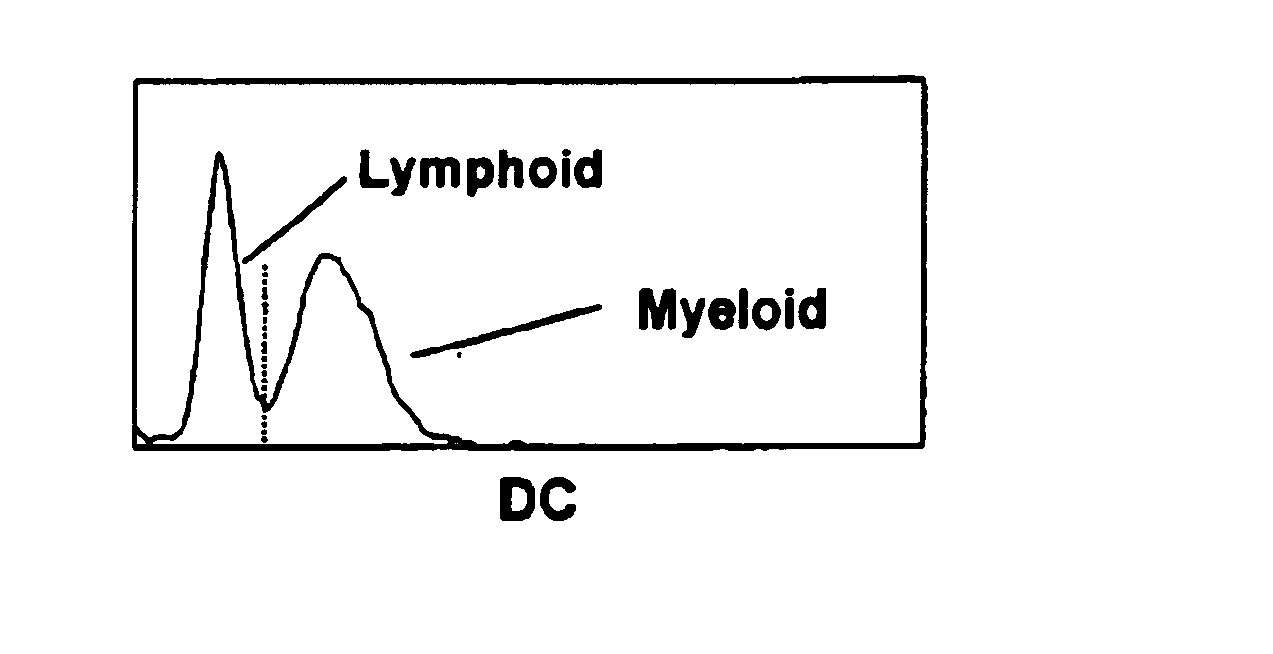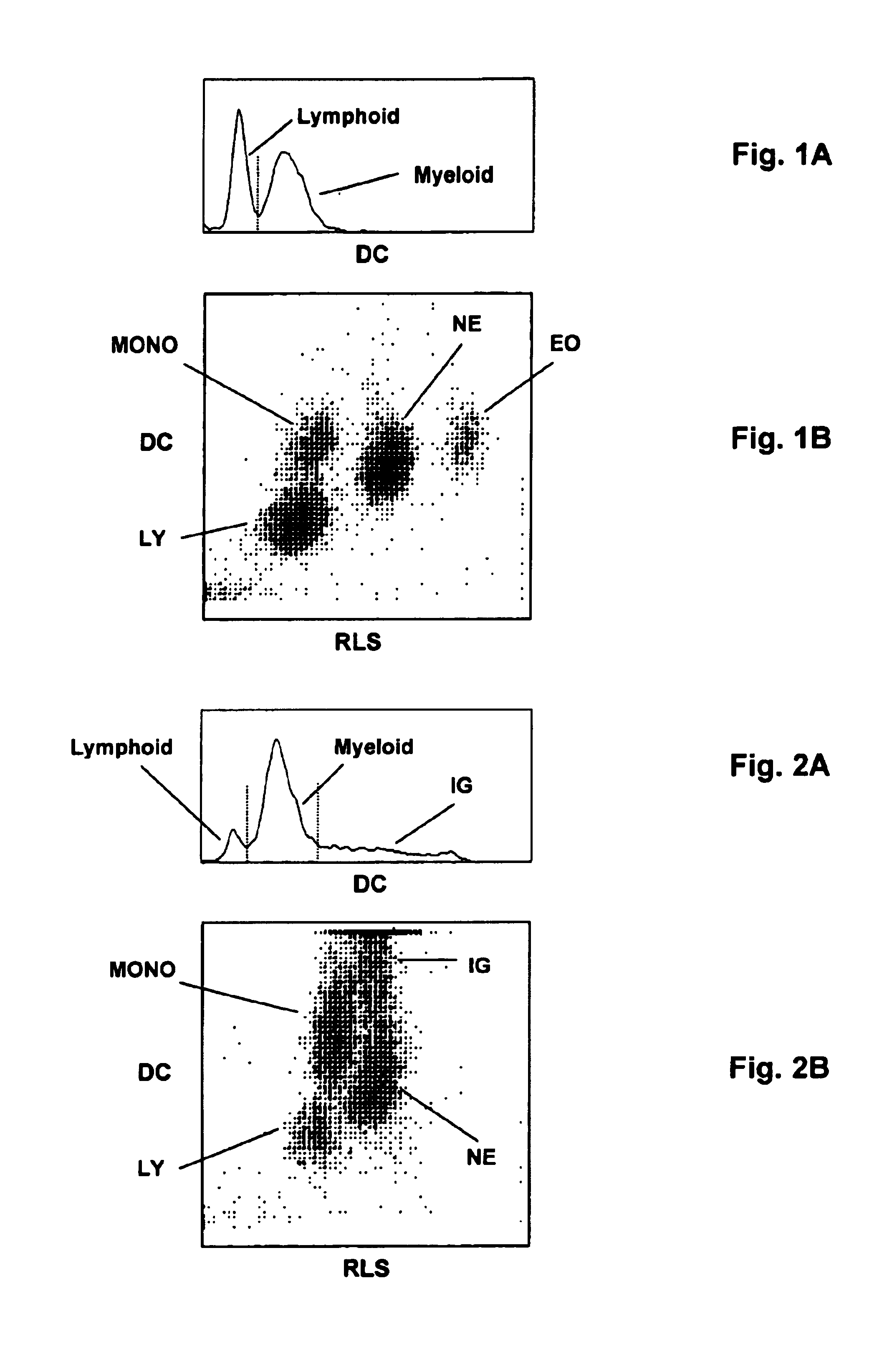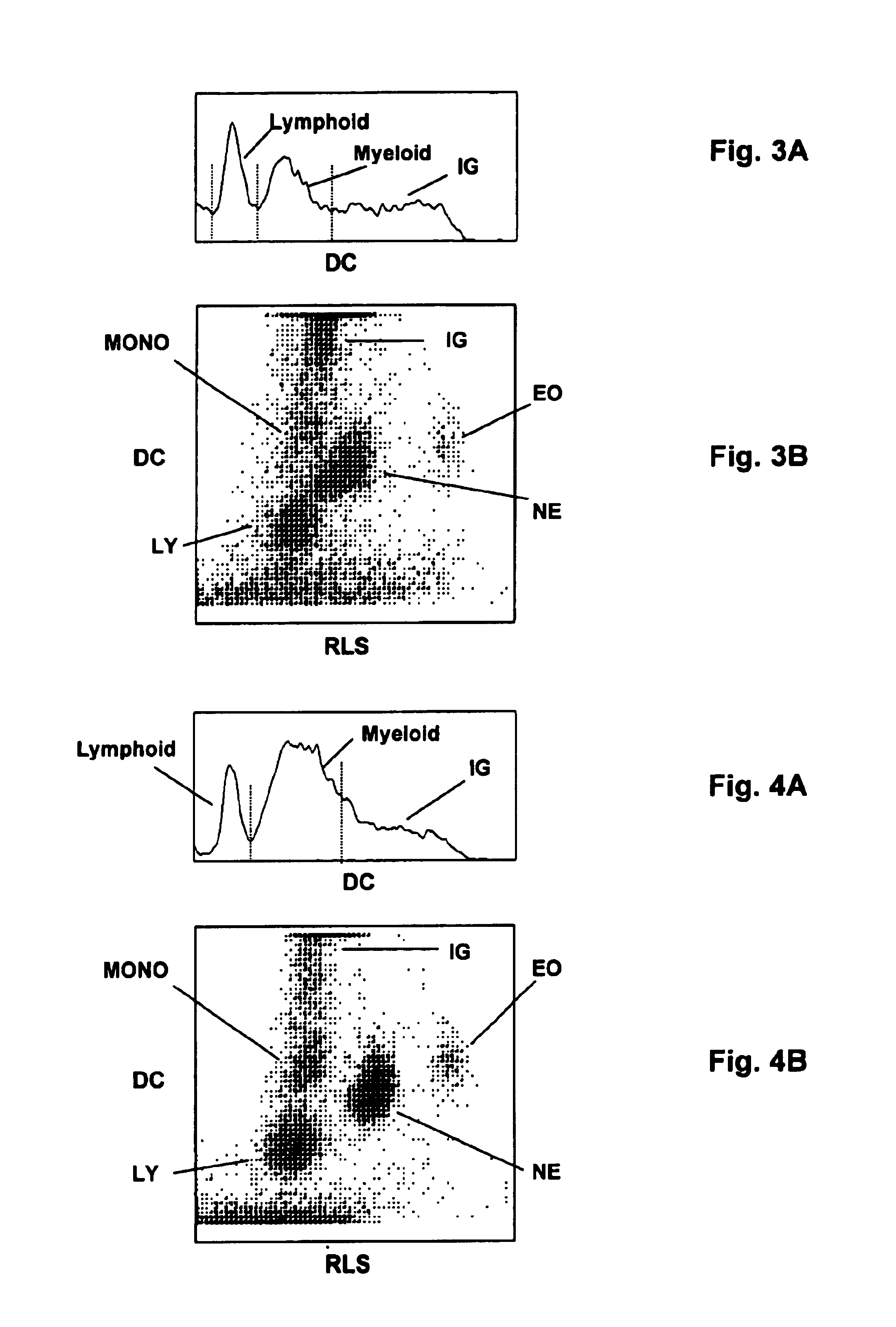Method for measurement of immature granulocytes
a technology of immature granulocytes and measurement methods, applied in chemical methods analysis, phase/state change investigation, instruments, etc., can solve the problems of inconvenient low-cost analyzers, high labor intensity and time-consuming tasks, and high cost of instruments and detection systems. achieve the effect of cost-effectiveness
- Summary
- Abstract
- Description
- Claims
- Application Information
AI Technical Summary
Problems solved by technology
Method used
Image
Examples
example 1
[0045]A whole blood sample was aspirated by an experimental hematology analyzer. A first aliquot of 28 μl was diluted with 6 ml of Coulter® LH Series Diluent (Beckman Coulter, Inc., Miami, Fla.), then mixed with 1 ml of a first lytic reagent composition to lyse red blood cells in a WBC bath. The first lytic reagent contained 25.0 g / L of tetradecyltrimethylammonium bromide, 15.0 g / L of Igepal SS-837 (an ethoxylated phenol from RhOne-Poulenc), 4.0 g / L of Plurofac A38 prill surfactant (from BASF Corp.), and had a pH of 6.2. The experimental hematology analyzer was a modified LH750 (product of Beckman Coulter, Inc., Miami, Fla.), which was equipped with non-focused apertures of a length of 100μ and a width of 80μ for measuring the prepared sample mixture as described above. The sample mixture was drawn through a set of three apertures (arranged in parallel) by a constant vacuum. The nucleated blood cells were counted by a DC impedance measurement, and a histogram of the blood cells, aft...
example 2
[0049]For the purpose of identifying distribution characteristics of immature granulocytes under the process and detection conditions described in Example 1, two types of immature granulocytes were grown in vitro by cell lines.
[0050]The first type of immature granulocytes is human promyelocytes grown by HL-60 promyelocytic cell line (ATCC certified cell line CCL-240, HL-60). The second type of immature granulocytes is human promyeloblasts grown by KG-1a cell line (ATCC certified cell line CCL-246.1 KG-1a). The cell culture condition used is known common procedures for cell growth. More specifically, the culture medium used is RPMI 1640 (a product of Roswell Park Memorial Institute, Buffalo, N.Y.), which comprises 10% fetal calf serum, 1% L-glutamine, and 1% penicillin / streptomycin. 50 ml of RPMI 1640 culture medium and 50 ml of a specific type of cells described above were added together and maintained for 24 hours at 37° C. under 5% CO2. The cell concentration upon propagation was ...
example 3
[0053]A clinical sample containing both immature granulocytes and nucleated red blood cells was analyzed according to the procedure described in Example 1. The manual reference reported about 10% of NRBC and about 10% of immature granulocytes, including metamyelocytes, myelocytes and promyelocytes. FIG. 5A is the obtained DC histogram of the first aliquot of the clinical sample, which shows both the NRBC population and the immature granulocytes. FIG. 5B shows a VCS scattergram from the second aliquot of the same clinical blood sample, which shows the NRBC population and the immature granulocytes, directly correlated to cell population distribution of the DC histogram from the first aliquot blood.
[0054]The NRBC population was differentiated from the white blood cells, and the ratio between the NRBCs and white blood cells (×100) was reported as the numbers of NRBC / 100 WBC. Alternatively, the NRBC can also be reported as absolute count in the blood sample by incorporating the total cou...
PUM
| Property | Measurement | Unit |
|---|---|---|
| aperture aspect ratio | aaaaa | aaaaa |
| aperture aspect ratio | aaaaa | aaaaa |
| aperture aspect ratio | aaaaa | aaaaa |
Abstract
Description
Claims
Application Information
 Login to View More
Login to View More - R&D
- Intellectual Property
- Life Sciences
- Materials
- Tech Scout
- Unparalleled Data Quality
- Higher Quality Content
- 60% Fewer Hallucinations
Browse by: Latest US Patents, China's latest patents, Technical Efficacy Thesaurus, Application Domain, Technology Topic, Popular Technical Reports.
© 2025 PatSnap. All rights reserved.Legal|Privacy policy|Modern Slavery Act Transparency Statement|Sitemap|About US| Contact US: help@patsnap.com



